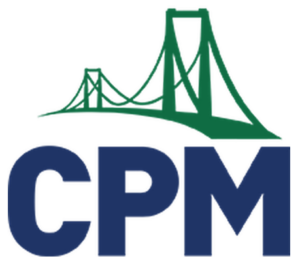Mark Coté, Project Manager
How do you create time? I pondered this Einsteinian conundrum one day while working with a handful of struggling students during my sixth period algebra class. Despite good effort, these students were making minimal progress toward understanding the material and were clearly missing key concepts that should have been acquired during previous instruction. I knew that I could help them catch up if we just had a little more time together.
Extra time to help students is the one educational commodity that is always in short supply. It seems elusive, constantly slipping through our fingers as the days and weeks and months of each school year race by at an uncomfortable velocity, while we try to adhere to a timeline commensurate with course completion. Many teachers are able to extend the school day by offering extra assistance before or after school, but all too often the students who would benefit most cannot or will not set the time aside.
So following one particularly frustrating session with my sixth period algebra class, I met with my principal and our school’s counselors to discuss options for additional support. A review of student records indicated that none of those that I was concerned about qualified for special education services. Several of the students participated in an after-school tutoring club that was staffed by volunteers from the community, but finding folks who could help with the algebra was typically rare. We decided to try a variation of the resource room intervention model that has been around since the 1970’s following the passage of Public Law 94-142 – The Education of All Handicapped Children Act.
The typical resource room is a separate classroom in a school where students with qualifying educational disabilities, such as specific learning disabilities, are given direct, specialized instruction with the goal of academic remediation. Additionally, assistance with homework and related assignments is provided. At the secondary level, students usually receive resource room support during one class period out of a six or seven period day. And during that period, as many as ten to twelve students may be working on assignments and projects from a dozen different courses, with possibly two dozen teachers putting their own spin on each academic task.
The modified model that we implemented targeted mathematics instruction and became known as MathLab. Recommendations for this type of intervention, known as Tier 2, have been published by the U.S. Dept. of Education as an IES (Institute of Education Sciences) Practice Guide.
Our first attempt involved the following procedures: 1) At a math department meeting during the late spring, teachers generated a list of students who needed extra instructional support, which tallied to 25 – 30 per grade level in a school with a population of 900. 2) Three teachers (one for each middle school grade) volunteered to teach a MathLab class in the fall as part of their five-period day. 3) The counselors scheduled the students accordingly and we opened for business in September. Or so we thought.
By the end of week one, we set aside any illusions of miraculous remediation and realized that behavior management would be a daily priority superseding math instruction. We quickly discussed options for damage control so that the classes retained a modicum of educational value and took stock of our three major mistakes.
- Oversized Classes – Believing that modest academic growth would result from grouping 30 struggling students who generally disliked math into one classroom was presumptuous to say the least. Noting that general social immaturity, impulse control, weak attention spans, and the absence of study skills were all common characteristics of our student population, we resolved that all future MathLab classes would have a maximum of twelve students.
- Screening – We never asked the students what they thought about losing an elective (which is usually a daily highlight for a struggling student) and replacing it with a second hour of a subject that was synonymous with failure. Many arrived the first day of class with a disgruntled attitude and little or no desire to take on the challenge of trying to understand the math. The new screening process involved consultations with both the students and the parents in the spring, well before student schedules were created for the fall. Only those who wanted the additional support were enrolled and anyone was welcome to transfer out of the MathLab to a different elective when a term ended.
- Single Teacher – Conducting an intervention class in concert with the entire math department presented numerous logistical challenges. Our goal was to help each student succeed in his or her “regular” math class. But with varied teaching styles, individual preferences for lesson focus, pacing discrepancies, and differences in grading philosophy, the number of days when everyone was on the same page regarding instruction were few and far between. The solution was to ensure that all twelve students in the MathLab class would also have the MathLab teacher as their “regular” class instructor. So I worked with my twelve MathLab students during first period, and then again in groups of three or four (as members of classes of 30-36 students) as they attended one of my four periods of algebra later in the day.
After making these organizational adjustments, year two of MathLab was deemed a resounding success. The design features of the CPM curriculum fit the goals of this intervention class like a glove. Employing Study Team Teaching Strategies in conjunction with team roles helped the students focus and practice the types of behaviors they would need for participation in the regular algebra class. Daily front-loading with the key problems in each lesson gave the students a leg up when it came time to attack the problems with their algebra class teams later in the day. On numerous occasions, it was the MathLab students leading their teams through the problem solving challenges, a big change from the past practice of sitting quietly and doing nothing or finding an off-task behavior to engage in. MathLab time was also used to get a jump start on the Review and Preview problems, extend time for tests and test corrections, target specific mathematical deficits for extra practice, and offer extra learning strategies that are compatible with developing growth mindset behaviors.
Since this intervention model was so successful, I decide to share the idea and results at the 2015 CPM National Conference during a session entitled They Don’t Get the Algebra – Now What? As a participant in the session, TRC teacher Pam Lindemer found the MathLab idea to be very exciting and something she might like to try at her school. So she went home and convinced her principal to add MathLab to the schedule for the 2015-16 school year. Watch for the spring CPM Newsletter to find out how MathLab is going in Pam’s school.

